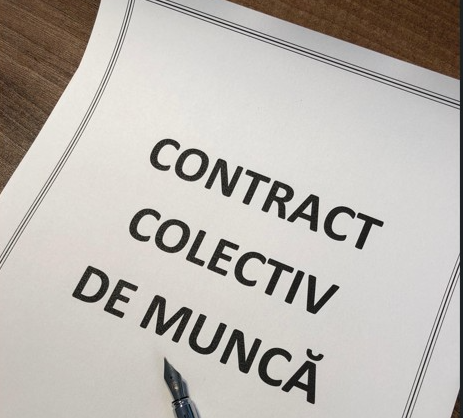În data de 21 iunie 2019 s-a publicat în Monitorul Oficial nr. 507/21.06.2019 Ordonanța de Urgență Nr. 43/2019 ce aduce modificări importante regimului impus de OUG Nr. 114/2018 domeniului construcțiilor. Despre OUG Nr. 114/2018 puteți găsi mai multe informații aici.
Pe scurt, OUG Nr. 43/2019 schimbă legislația sau aduce clarificări din patru puncte de vedere. Acestea vizează salariul minim, pe de-o parte, precum și condițiile necesare pentru ca angajații și angajatorul să beneficieze de facilitățiile fiscale, pe de alta:
I. Salariul minim
În domeniul construcțiilor salariul minim brut va fi de 3.000 lei pe durata 1 ianuarie 2020 – 31 decembrie 2028, pentru un program normal de lucru în medie de 167,333 ore pe lună, reprezentând în medie 17,928 lei/oră.
În data de 21 iunie 2019 s-a publicat în Monitorul Oficial nr. 507/21.06.2019 Ordonanța de Urgență Nr. 43/2019 ce aduce modificări importante regimului impus de OUG Nr. 114/2018 domeniului construcțiilor. Despre OUG Nr. 114/2018 puteți găsi mai multe informații aici.
Pe scurt, OUG Nr. 43/2019 schimbă legislația sau aduce clarificări din patru puncte de vedere. Acestea vizează salariul minim, pe de-o parte, precum și condițiile necesare pentru ca angajații și angajatorul să beneficieze de facilitățiile fiscale, pe de alta:
I. Salariul minim
În domeniul construcțiilor salariul minim brut va fi de 3.000 lei pe durata 1 ianuarie 2020 – 31 decembrie 2028, pentru un program normal de lucru în medie de 167,333 ore pe lună, reprezentând în medie 17,928 lei/oră.
II. Domeniul de activitate – beneficii pentru angajator
Activitățiile cuprinse în domeniul construcțiilor sunt :
- activitatea de construcții definită la codul CAEN 41.42.43 – secțiunea F – Construcții;
- domeniile de producere a materialelor de construcții, definite de următoarele coduri CAEN
- 2312 – Prelucrarea și fasonarea sticlei plate;
- 2331 – Fabricarea plăcilor și dalelor din ceramică;
- 2332 – Fabricarea cărămizilor, țiglelor și altor produse pentru construcții din argilă arsă;
- 2361 – Fabricarea produselor din beton pentru construcții;
- 2362 – Fabricarea produselor din ipsos pentru construcții;
- 2363 – Fabricarea betonului;
- 2364 – Fabricarea mortarului;
- 2369 – Fabricarea altor articole din beton, ciment și ipsos;
- 2370 – Tăierea, fasonarea și finisarea pietrei;
- 2223 – Fabricarea articolelor din material plastic pentru construcții;
- 1623 – Fabricarea altor elemente de dulgherie și tâmplărie pentru construcții;
- 2512 – Fabricarea de uși și ferestre din metal;
- 2511 – Fabricarea de construcții metalice și părți componente ale structurilor metalice;
- 0811 – Extracția pietrei ornamentale și a pietrei pentru construcții, extracția pietrei calcaroase, ghipsului, cretei și a ardeziei;
- 0812 – Extracția pietrișului și nisipului;
- 2351 – Fabricarea cimentului;
- 2352 – Fabricarea varului și ipsosului;
- 2399 – Fabricarea altor produse din minerale nemetalice n.c.a.;
- 711 – Activități de arhitectură, inginerie și servicii de consultanță tehnică;
Astfel, față de OUG Nr. 114/2018, noul act normativ a suplimentat lista de coduri CAEN cu următoarele:
- 2351 – Fabricarea cimentului ;
- 2352 – Fabricarea varului si ispsosului ;
- 0520 – Extractia carbunelui inferior ;
- 2399 – Fabricarea altor produse din minerale nemetalice n.c.a. (bitum, smoala etc.)
III. Cifra de afaceri- beneficii pentru angajator
Pentru a beneficia de facilitățiile fiscale, angajatorul trebuie să aibă o cifră de afaceri de minim 80% provenită dintr-una dintre activitățile enumerate mai sus. Pragul de 80% trebuie atins în anul fiscal anterior. Astfel, apar două tipuri de companii:
- Companiile care au atins pragul de 80% – acestea vor beneficia de facilități pe toată durata anului curent.
- Companiile nou înființate sau care nu au atins pragul de 80% în anul fiscal anterior- în cazul acestora procentul de 80% se va calcula în anul curent în modul următor: cumulat de la începutul anului, inclusiv luna în care se aplică scutirea. Blowjob videos https://www.blowjobvideos.xxx/ watch online!
Cifra de afaceri se va calcula luând în considerare manopera, materiale, utilaje, transport, echipamente, dotări și alte activități auxiliare necesare activităților din codurile CAEN menționate . Se va include și producția realizată și nefacturată.
IV. Venitul la care se aplică facilitățiile – beneficii pentru angajat
- Angajatul trebuie să fie angajat cu un contract de muncă de încadrare de 8 ore/zi.
- Venitul brut din salarii și asimilat salariilor trebuie să fie în intervalul 3.000-30.000 lei. Partea din venitul brut lunar ce depășește 30.000 lei nu va beneficia de facilități fiscale.
Distribuie pe social media



